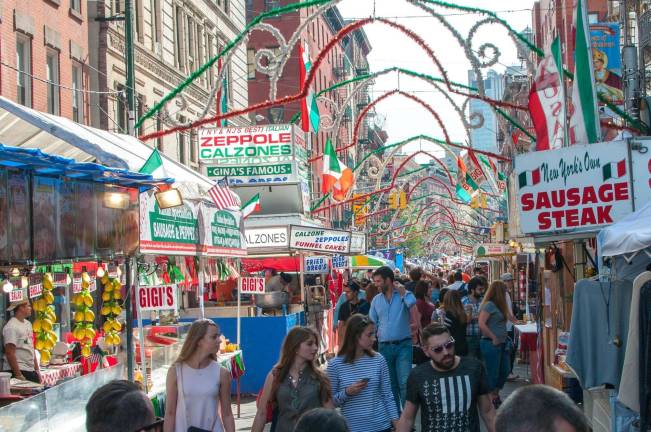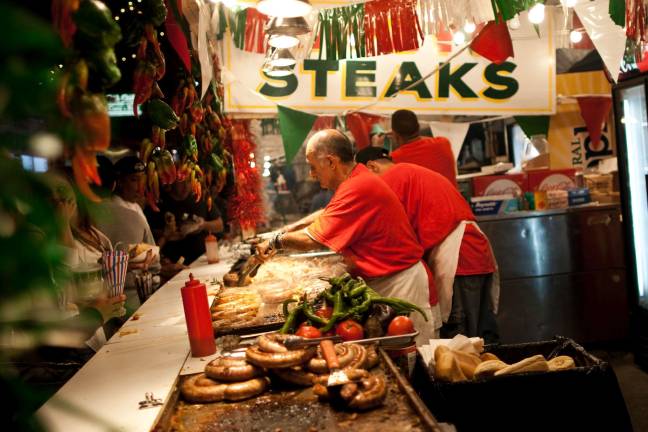Steeped in tradition


Michael Vera was born on Mulberry Street, in the same apartment his grandparents settled into when they immigrated to Little Italy from Naples at the end of the 19th century. Now 69, he still lives there, and although he’s seen the neighborhood change, one thing that’s remained over the decades is the Feast of San Gennaro.
Now in its 91st year, the feast will run from September 14 to 24, with highlights like cannoli- and meatball-eating contests and a Mass to celebrate the patron saint of Naples for which it is named, at the Church of the Most Precious Blood.
As a member of the Figli di San Gennaro, the nonprofit that runs the iconic event, Vera celebrates the past, but also looks to the future. “I hope that the Feast of San Gennaro goes at least to 100 years. We’re hoping and praying for that part. And then, we hope that all its heritage and background is preserved. And that the future is intertwined with much of the past.”
Tell us about your family’s history in Little Italy.My grandparents came from the town of Avellino which is in Naples. They moved to Mulberry Street in 1897. I still live in the same apartment. We’re still the legal occupants living there.
What was it like growing up there? It was a fantastic, quaint, nice and friendly neighborhood. The people were generous and friendly. Up until the early ‘70s, it was still considered an Italian neighborhood. Most people have moved out basically for more room and have families ... parking was involved, schools were involved. So a lot of them have moved to, I don’t want to say suburbia, but a lot have moved to Brooklyn and Staten Island.
How has the neighborhood changed?It changed in the fact that it’s not a neighborhood that’s a neighborhood anymore. You lose your heritage because everybody starts to separate. Families don’t come back around anymore. The only time they usually come back down is basically during the Italian festival or to frequent some of the Italian restaurants. The millennials that have come in, the bad part about that, is they made the rents, which were basically at one point stable, go sky-high. But when they decided to come in, rents have gone very high and they no longer patronize a lot of places that are still around.
As part of the Figli di San Gennaro, what are some initiatives you’re working on?We are helping to keep some of the religious institutions around, such as the Church of the Most Precious Blood. We help fund that to get it back on its feet and get it refurbished. We hope that it will be around for a longer time. It was basically an Italian-oriented church and attended by the Italians that were around. We help support the church as best we know how and have several fundraisers, including the Feast of San Gennaro.
What is your favorite memory of the feast?The best memories were I think, what everyone usually remembers, the grease pole. They used to have a pole filled with grease. There were teams of guys around the neighborhood who basically tried to climb to the top. And on the top, there were all kinds of prizes ... money, at that time, televisions and a few other household goods. That stopped in the ‘70s somewhere; I’m not too sure about the exact date. It was very family-oriented. At the time, families came back to the neighborhood. All the families that were still here cooked and ate at their grandparents’ house.
Anything new to the feast this year or does it stay the same?It’s usually almost all the same, but there are quite a few different factors. Usually the same vendors are around, lots of sausage and zeppole stands. A lot of the good and healthy Italian foods. I think there are a few vegan stands that have opened up along its way. It’s a good time, fun for all, and still safe. It’s still a safe neighborhood.
www.sangennaro.org